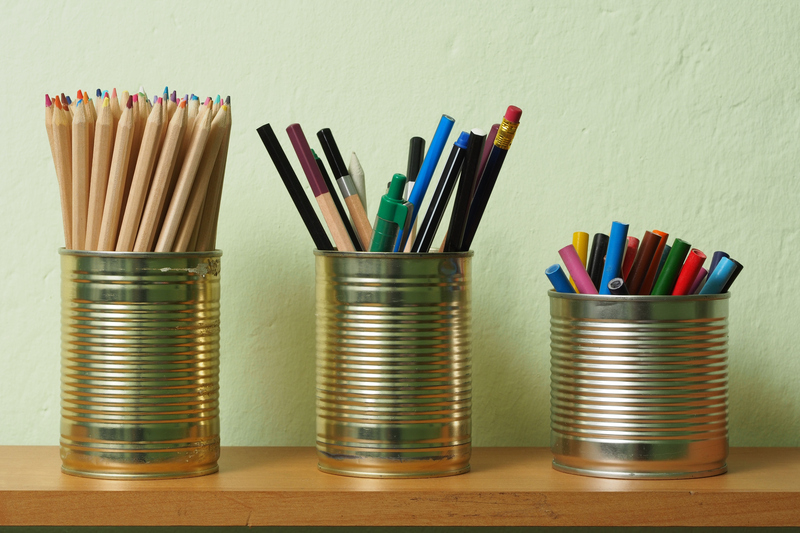What to Do with PPE Waste for Maximum Safety: Comprehensive Guide
PPE, or Personal Protective Equipment, has become a cornerstone in ensuring health and safety--especially during and after the global COVID-19 pandemic. Proper management of PPE waste is now more crucial than ever. Incorrect disposal of items like gloves, face masks, and gowns poses health, environmental, and legal risks. But what exactly should you do with PPE waste to ensure maximum safety for people and the environment? This thorough guide provides actionable answers and expert insights.

Understanding PPE Waste: Types and Risks
*Personal Protective Equipment waste* encompasses all used or discarded items designed to protect individuals from hazards in workplaces, healthcare facilities, and public spaces. Common items include:
- Disposable face masks and shields
- Gloves (nitrile, latex, vinyl)
- Protective gowns and aprons
- Shoe covers
- Surgical caps
- Single-use respirators
Improper handling of these wastes can:
- Spread infection and disease
- Increase plastic pollution
- Violate safety and environmental laws
- Harm wildlife and marine environments
Why Safe PPE Waste Disposal Matters
Neglecting proper PPE waste management increases the risk of contamination, transmission of pathogens, and environmental pollution. Businesses and individuals alike must stay informed about best practices to protect community health and meet compliance requirements.
Step-by-Step: How to Dispose of PPE Waste Safely
1. Segregation: The First Defense Against Hazards
Separating PPE waste from general waste is a fundamental safety step. Use specially marked bins or containers, preferably color-coded (yellow or red for biohazardous items), and ensure clear signage.
- At home: Dedicate one closed, lined bin for PPE in a ventilated area.
- At workplaces or hospitals: Rigid, leak-proof containers or bags with lids are mandatory. Biohazard symbol labeling is recommended.
2. Secure Containment: Preventing Contact and Spread
PPE waste should be contained in strong, tear-resistant bags. Double bagging is encouraged, especially for visibly soiled items or those from high-risk areas.
- Do not overfill waste bags; maintain a two-thirds capacity limit.
- Seal bags tightly before removal.
- Disinfect the exterior of the bag or container.
3. Safe Handling Practices
Always use fresh gloves when handling PPE waste. Immediately wash hands with soap and water or use hand sanitizer afterwards. Avoid touching your face during the process.
- Limit direct contact with used PPE as much as possible.
- Transport waste directly to the designated disposal point without delay.
4. Designated Disposal: Where Should PPE Waste Go?
PPE disposal procedures differ by location:
- Hospitals and clinics: Use regulated medical waste channels. Waste is typically autoclaved, incinerated, or chemically disinfected.
- Businesses and offices: Hire specialized waste management services. Some local councils offer biomedical waste pickups.
- Residences: For non-medical PPE, double bag and place in regular rubbish--but do not recycle. If caring for a sick person, consult your local public health department for instructions.
*Never dispose of PPE items in recycling bins.* These materials are not recyclable through standard curbside programs.
5. Special Considerations: Reusable PPE
Some personal protective equipment, such as cloth masks or reusable gowns, can be cleaned and reused. For maximum safety:
- Wash reusable PPE in hot water with regular detergent.
- Dry completely at high heat.
- Inspect for wear and tear before reusing; damaged items should be disposed of properly.
Going Beyond Disposal: Reducing and Managing PPE Waste
Proactive PPE waste management doesn't stop at disposal. Mitigating risks involves reducing waste generation and exploring sustainable alternatives.
1. Minimize Usage Where Appropriate
- Encourage digital or touchless workflows to reduce contact.
- Train staff on when PPE is truly necessary, avoiding overuse.
- Opt for reusable PPE when safe and practical.
2. Choose Sustainable PPE Alternatives
- Consider compostable or biodegradable face masks and gloves.
- Look for suppliers with environmental certifications.
- Promote innovations, such as recyclable PPE products.
3. Encourage Proper Public Behavior
Public education is key to reducing careless disposal, such as mask littering. Safety campaigns should highlight:
- Environmental impact of discarded PPE
- Proper methods for PPE waste disposal
- Alternatives to single-use items where feasible
PPE Recycling: Is It Possible?
*Can PPE be recycled?* The answer is nuanced. Most single-use PPE contains materials (like polypropylene plastic) that are technically recyclable, but they are considered contaminated and not accepted in regular recycling streams. However:
- Some specialized collection schemes exist for safely recycling uncontaminated PPE, especially for large enterprises (e.g., glove recycling programs).
- TerraCycle and other organizations offer PPE recycling boxes for certain items, often at a cost.
- Always segregate clean, non-medical PPE from contaminated items.
If unsure, always err on the side of safety and use standard waste protocols for contaminated PPE.
Legal and Regulatory Compliance
Failure to dispose of PPE waste correctly can result in serious breaches of environmental, health, and safety regulations. Ensure compliance by:
- Following OSHA, EPA, CDC, and WHO guidelines (or your local equivalents)
- Maintaining thorough records of hazardous waste disposal
- Training employees on current and evolving disposal protocols
- Staying informed through your workplace safety officer or public health authorities
*Non-compliance can result in heavy fines, reputation damage, and increased health risks.*
The Role of Employers in PPE Waste Safety
Workplace PPE Waste Management Responsibilities
Employers have a duty of care to provide safe work environments. This includes the provision of proper PPE disposal bins, regular waste removal, and ongoing staff training.
- Display clear instructions and infographics near collection points.
- Audit waste management practices regularly.
- Partner with licensed medical or hazardous waste companies for larger volumes.
Employee Training and Engagement
Engaged and informed employees are key to safe waste practices. Offer regular training on:
- Why PPE waste must be handled with care
- How to distinguish between regular and hazardous waste
- Personal hygiene (handwashing and PPE removal techniques)
Environmental Impact of PPE Waste and Long-Term Solutions
The pandemic has led to the rapid increase of PPE litter and microplastics in ecosystems. PPE pollution damages marine life, disrupts food chains, and crowds landfill sites. For long-term solutions:
- Support research into biodegradable and fully recyclable PPE products
- Sponsor local clean-up events and waste reduction education
- Adopt a circular economy approach where possible, incentivizing reuse and recycling over disposal
Conclusion: Best Practices for PPE Waste Disposal and Safety
Maximum safety in PPE waste management starts with clear policies, diligent segregation, cautious handling, and proper disposal. Individuals and organizations alike play crucial roles. By being proactive and informed, we protect not only ourselves but also our communities and the planet.
- Always separate PPE waste from regular waste
- Use sturdy, labeled bags or bins for disposal
- Never recycle used PPE with household materials
- Follow local disposal regulations and guidance
- Opt for sustainable PPE products when possible
Whether at work, at home, or in public places, being conscious and careful about PPE waste makes a true difference. Stay updated, remain safe, and contribute to a cleaner, healthier world.

Frequently Asked Questions about PPE Waste Safety
-
Can I recycle plastic gloves or masks at home?
No. Most single-use PPE should not go in household recycling bins, as they are likely contaminated. -
What should I do if I see PPE litter in public places?
Report it to local authorities. If you collect it, use gloves and double-bag, then wash hands thoroughly. -
Are biodegradable PPE items safer for the environment?
Generally yes, if certified and properly composted. However, proper disposal is still necessary to avoid contamination. -
Do I need to disinfect PPE waste before disposal?
For personal or home waste, double bagging is usually enough. Facilities may require chemical disinfection.
Stay Safe--Dispose of PPE Responsibly
Active engagement in safe PPE waste disposal ensures the wellbeing of our communities and environment. Make safety your top priority in every step of handling, segregating, and disposing of used PPE.
